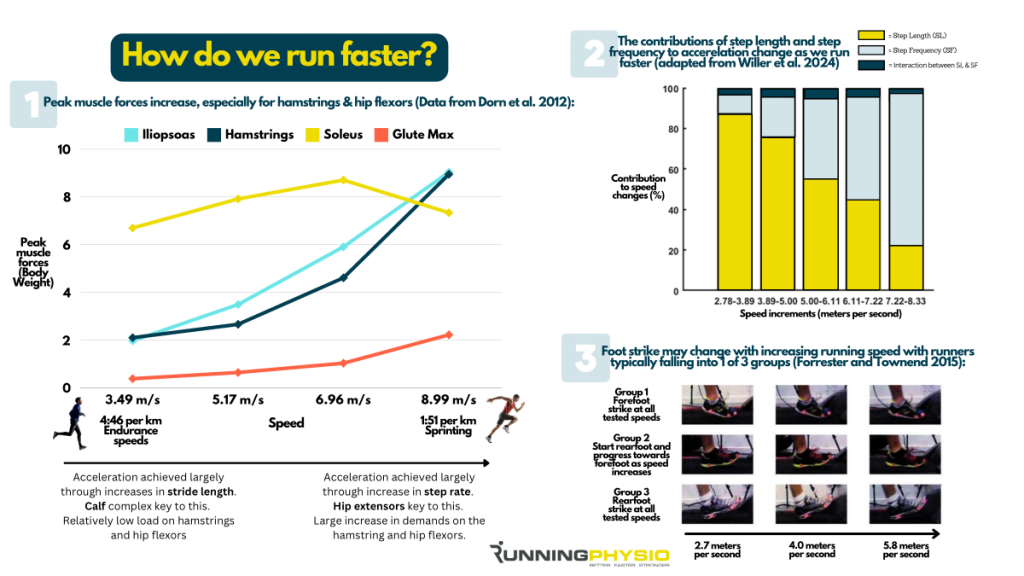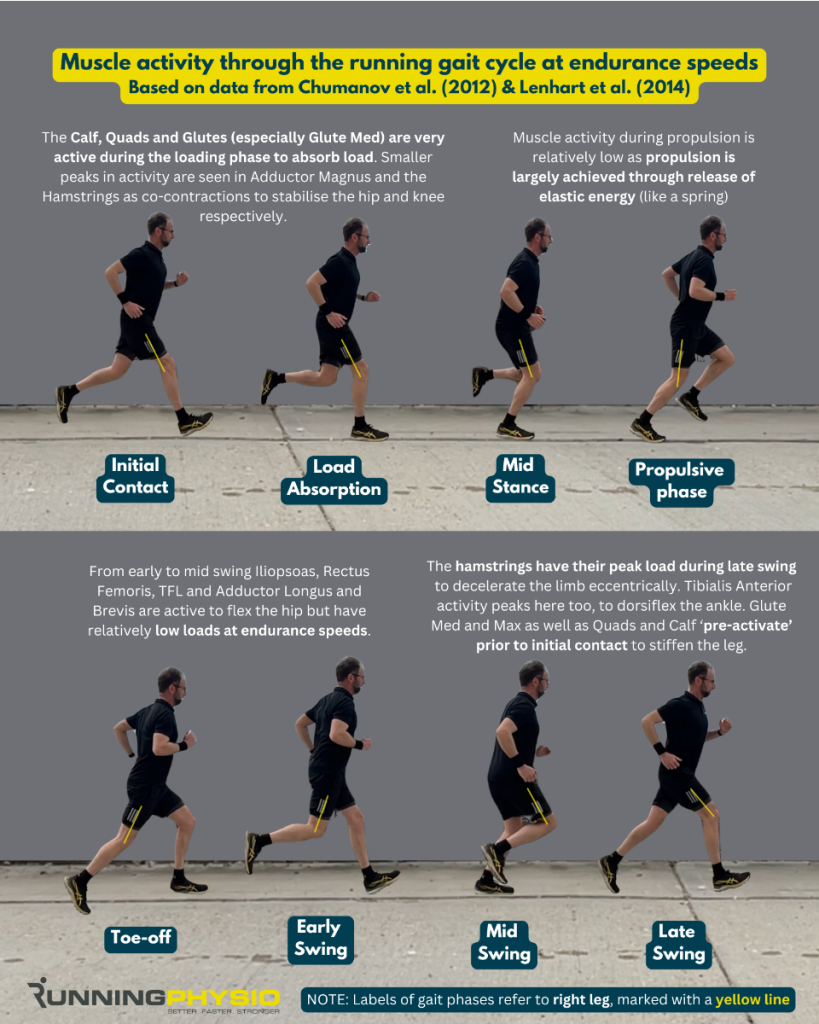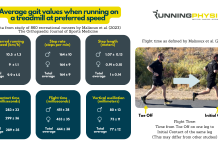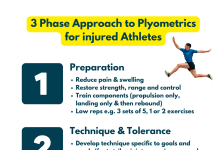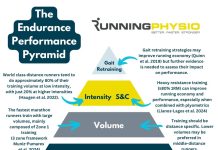Our articles are not designed to replace medical advice. If you have an injury we recommend seeing a qualified health professional. For more information see out Terms and Conditions.
Running gait is not a fixed, rigid thing. It changes with surface, incline and fatigue. It also changes a lot with speed so in today’s post, we’re going to explore this and the implications for assessment and treatment of runners.
During running, there are 2 main ways in which we can run faster:
- Push on the ground more forcefully to increase stride length
- Push on the ground more frequently to increase step rate
At lower speeds, acceleration is largely achieved by increasing stride length and we think the calf complex is an important contributor to this (Willer et al. 2024).
At higher speeds, ground contact time reduces, and it becomes more difficult to increase stride length. So while it continues to increase somewhat as we run faster, those increments become progressively smaller. By contrast, the increases in step rate become larger so as we progress towards sprinting, we’re accelerating more by pushing on the ground more frequently (rather than more forcefully to increase stride length). We think the hip extensors play a key role in increasing step rate (Willer et al. 2024)
Here’s a graphic summary of how muscle peak load changes with running, the contributions of step length and frequency and how we may modify foot strike:
Image references: Dorn et al. (2012), Forrester and Townend (2015), Willer et al. (2024)
Implications for management of running injury
It’s important to explore the relationship between running speed and pain. If they appear connected (e.g. pain is worse at higher intensities), then assess running gait across a range of speeds, including what’s usually provocative. Look for a change with higher speeds that may increase load on sensitive tissue.
EXAMPLE: Runner with Patellofemoral Pain who is comfortable at slow speeds but has symptoms with faster efforts. They report their park run (5km) is often aggravating for the knee. They typically do it at 5 mins/km, and their slower runs are usually 6 mins/km (or slower). So we assess at an easy pace (6mins/km or 10 km/h on the treadmill) and compare to a provocative pace (5 mins/km or 12km/h). We see they overstride more at this faster pace, which might place more stress on the knee. We could try re-training strategies such as increasing step rate to address this. The runner would then focus on applying this during these faster, more provocative runs.
In our example above, we could also include a graded exposure to speed. We know 6 mins/ km if comfortable, so we might suggest sticking with the 5km distance (so we’re not changing too much at once) but trying 5:30 mins/ km. These runs can become an objective test, like many tests we’d do in clinic. We assess the response and adapt from there. So if 5:30 mins/km is still provocative, we might suggest 5:40 mins/ km. If it’s tolerable, we can keep progressing by gradually increasing that pace towards 5 mins/km over a series of runs and monitoring response.
We may adapt our rehab around the demands of faster running and include plyometrics to help develop power. Here’s a quick overview of muscle activity during running at endurance speeds:
We know the calf manages high peak loads and contributes to both load absorption and propulsion. We might expect calf load to increase further if a runner moves towards forefoot strike at higher speeds.
As speed increases, calf and Achilles load is likely to increase, as will the demands on the hamstrings and hip flexors (especially towards maximum speed/ sprinting). Other structures, such as the tibia and the knee, may experience high loads with faster running too.
Strengthening the calf can help manage these higher loads and may lead to improvements in running economy (Bohm et al. 2021). We may need to target the hamstrings, hip flexors and adductors too. This can be achieved through resistance training but a progressive sprinting programme can also be beneficial, typically with short efforts and a gradual increase in intensity. This helps prepare the body for top-speed running and can lead to positive adaptations within the muscle, such as increased fascicle length and eccentric strength (Mendiguchia et al. 2020, Freeman et al. 2019).
Speedy summary
In a nutshell, we want to understand the demands of faster running so we can help prepare athletes for this after injury. There is likely to be considerable individual variability so we need to assess to determine changes in running gait and how we may adapt their rehab.
It isn’t just a case of saying, “Ok, you’re strong now, go sprint!” We also need to plan a graded exposure to faster speeds at the right stage of recovery and monitor response.
One final point, if an athlete has specific performance goals, I recommend teaming up with a running coach to help ensure these performance needs are met.
